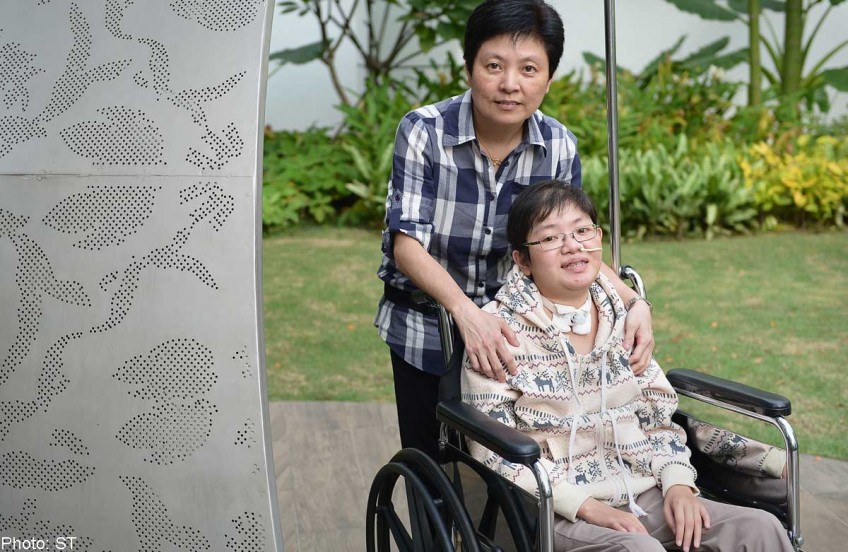A silent fight against a genetic disease


She seemed a perfectly normal child, although she was always small and skinny. But when Jane Tan was 15, her parents found that when they called out from behind her, she would not respond.
"That was when my world started to become quieter," said Miss Tan, who is now 27 and completely deaf.
When she turned 17, her life turned upside down during a simple health screening for entry to Temasek Polytechnic. Doctors found that she had chronic kidney failure.
And that was just the beginning of worse to come. A biopsy revealed that she had Melas - short for Mitochondrial Encephalopathy, Lactic Acidosis and Stroke-like Episodes.
That mouthful of a name meant that the DNA of the human cell's powerhouses, called mitochondria, were defective. And the genetic condition could affect almost every part of the body.
Although Miss Tan had the disorder from her mother, Madam Chin Shwu Jiuan, 54, had no health problems.
Soon, the teenager was undergoing dialysis daily while at polytechnic but she persevered.
"I tried my best to be punctual, and there were no excuses for skipping classes," said Miss Tan, a patient at the National University Hospital for the last decade.
By 2007, she was set to graduate and a step closer to her dream job of becoming a dietician or nutritionist. But just two days before her graduation ceremony, she had fits, suffered a stroke, and was in a coma for a week. That left her paralysed on her left side, though extensive therapy for six months got her back on her feet and her condition stabilised for four years.
Then, in 2011, an infection flared up and her lungs collapsed.
She spent three months in hospital, during which her weight plummeted to just 22kg and a tube was inserted permanently into her windpipe to help her breathe. Another tube went into her small intestine for feeding.
Madam Chin, who cares for her daughter full time, said: "There was the suction pump, the feeding pump, and the oxygen meter to monitor. She lost her ability to walk, and I slept by her side, always listening for the machine to beep. It was a very stressful time."
She and her husband have a furniture shop but she left business affairs to him when their daughter got sick.
Miss Tan has managed to fight back and put on weight - she is now up to 31kg - and can eat her favourite foods such as xiao long bao (pork dumplings) and guo tie (pan-fried dumplings) again.
She taught herself to lip-read, and has been on excursions with her parents, older sister and younger brother to Universal Studios, the zoo, Underwater World and River Safari, and is hoping to get out of her wheelchair, stand and walk on her own again.
She has also written a book about her experiences, to help people understand her condition better.
"After going through my most difficult times, I am back to my old self and people have started calling me chatterbox again," she writes.
Her book, A Silent Fighter, is on sale at S$12 and proceeds will go towards the NUHKids Fund to help young patients who need financial support, and Dreamcatchers, which runs activities and provides support for adolescent patients.
To get a copy, e-mail ckc_enquiries@nuhs.edu.sg
She will be at her book launch, to be held at the opening of the Project Dreamcatchers 2014 exhibition at the Singapore Management University, at 7pm on Friday.
Vivid dreams
"I had a dream where both the patient next to me and I floated above our bodies and I managed to come down to my bed but not him. I also had vivid dreams of my being buried and that somehow someone managed to smash through my tombstone and carry me out as a newborn baby... In many ways, my last dream was true in the sense that I was transformed back into a 'newborn' after the stay in intensive care. I needed to be cared for by my mother in terms of bathing, feeding and carrying me onto the wheelchair and back to the bed.

This article was first published on July 20, 2014.
Get a copy of The Straits Times or go to straitstimes.com for more stories.